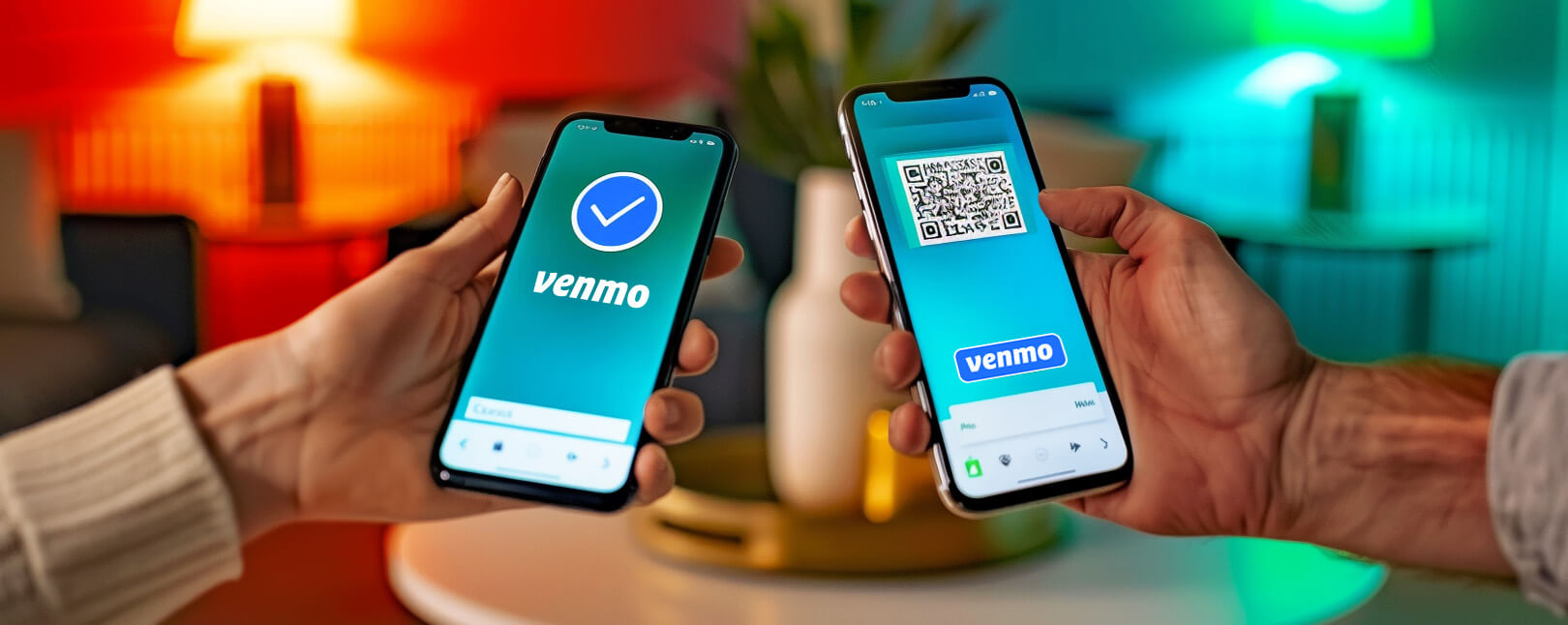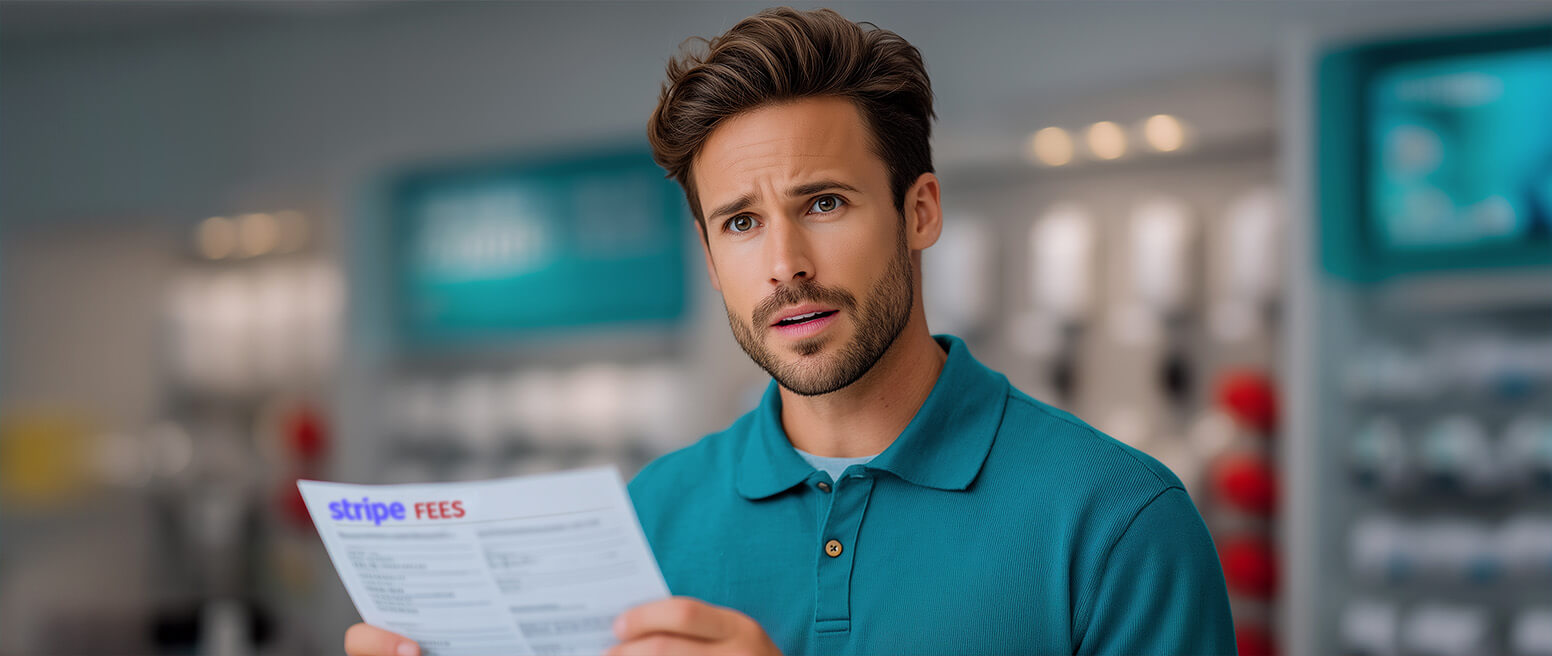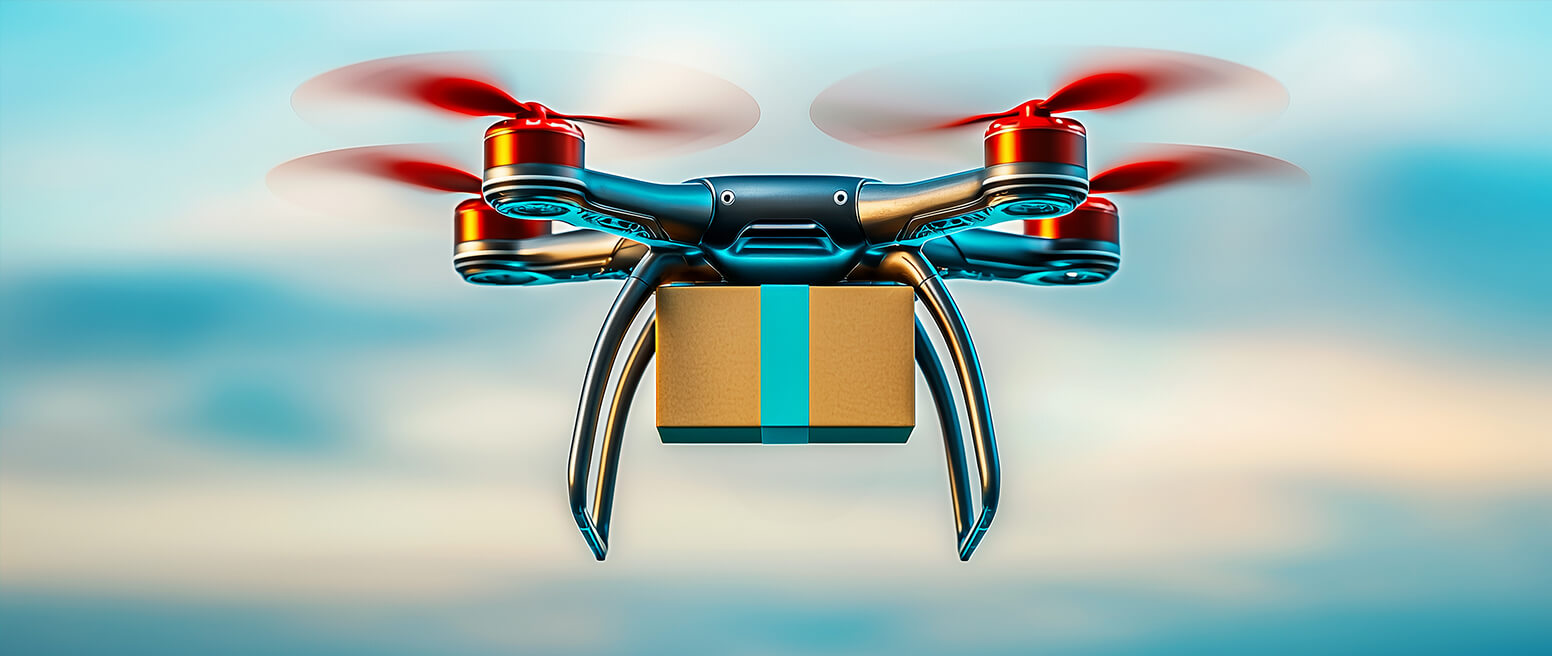Is Your Business Equipped to Handle Venmo Chargebacks?
Remember what it was like going out to eat with friends before Venmo?
Everybody gets argumentative, somebody gets out the calculator, another person starts crying... okay, maybe it wasn’t that dramatic. But, it’s undeniable that peer-to-peer (P2P) payment apps like Venmo have made it a lot easier to exchange money with friends, family, and businesses.
Venmo is a third-party payment app like PayPal or Cash App. If a user has the app installed on their mobile device, that person can instantly transfer money from an existing Venmo account to another user. This is a super-convenient way to split a check with friends, lend money to a family member in need, or do anything in between.
The platform boasted more than 85 million global users in 2023. And, while P2P payments may be Venmo’s bread and butter, their “Pay With Venmo” feature found traction with more than two million merchants around the world.
But of course, whenever you’re talking about digital payments, there’s inevitably the possibility of mistakes, technology errors, or even fraud. This has led to more and more discussion about the Venmo chargeback and dispute process in recent years?
How do users get their money back if they become victims of fraud on the Venmo platform? What can individual users and businesses do to manage risk while using the platform? Let’s get into it.
Recommended reading
- Wells Fargo Disputes: Chargeback Rules & Things to Know
- Bank of America Disputes: Here's What You Need to Know
- What is the Zelle Dispute Process? What Should Victims Do?
- Stripe Chargeback Fees: Rules, Policies & How to Lower Costs
- How Square Disputes Work | Rules, Protections & More
- Dropshipping Chargebacks | Causes & Tips to Prevent Them
What is a Venmo Chargeback?
- Venmo Chargeback
A “Venmo chargeback” most often refers to a dispute filed by a cardholder with their issuer stemming from a Venmo transaction. This is different from an internal “Venmo dispute,” as it involves the card issuer rather than being handled directly by the payment platform.
[noun]/ven • mō • charj • bak/
This is a bit complicated. So, be sure you’re following close. When a user signs up for Venmo, they can choose to fund their Venmo account using their bank account directly, or using a credit or debit card. So, when people refer to “Venmo chargebacks,” they might be describing one of two different processes.
First, there’s the Venmo dispute process, which is conducted through Venmo. Then, there’s the actual chargeback process, where a cardholder disputes a credit or debit charge that was used to fund a Venmo transaction. We’ll talk more about the difference between the two in a minute.
For now, just know that a chargeback is basically a bank-initiated refund. The cardholder calls their bank, claiming that a transaction was unauthorized, or that some other error occurred, and the bank reverses the charge in question. The merchant loses the funds being disputed, and is also hit with a chargeback fee meant to cover the bank’s costs.
Venmo Disputes vs. Venmo Chargebacks: How Do They Work?
Venmo disputes are filed directly with the company itself. Venmo chargebacks, meanwhile, involve a Venmo transaction, but are filed with the cardholder’s issuing bank.
Like we talked about above, Venmo has its own internal dispute process. This is very different from the typical chargeback process for several reasons. The most significant differences are the order of operations and the deciding entity.
What Transactions Qualify for a Venmo Dispute?
Dispute resolution is managed through Venmo via the Purchase Protection Program portion of their User Agreement. It stipulates that if a buyer can’t resolve an issue directly with the seller, they can file a Venmo Purchase Protection claim. This claim has to meet specific criteria, though.
Qualifying Payments
The first thing to mention here is that the Venmo Payment Protection Plan only applies to qualifying payments. This means that any disputes that fall outside of this category will be immediately denied. Otherwise, cardholders may be entitled to a refund if the transaction qualifies.
Qualifying payments have to be one of the following:
- Venmo Debit Card purchases.
- Goods and services purchased from authorized merchants.
- Payments sent using the Pay and Request feature that are sent to business profiles or that are identified as being for goods and services.
Transactions Eligible for Venmo Disputes
Suppose a cardholder purchases goods or services through a Venmo-approved merchant, but the items were verifiably not received. Or, maybe the goods arrived damaged, or didn’t jive with the item description. In any of these cases, the buyer can contact Venmo to dispute the charge. The buyer needs to provide proof of purchase to receive a refund, though.
Some of the factors Venmo will consider before granting a refund include whether:
- The seller’s description differs significantly from the end product
- The buyer received a completely different item
- The condition of the item was misrepresented or is damaged
- The item is missing key elements that were not disclosed
- The item is unusable
Transactions Not Eligible for Venmo Disputes
If the seller can provide proof of delivery or prove the buyer enabled a third party to procure the item on their behalf, the transaction will not be eligible for a refund. The dispute will be rejected.
Items are not eligible for a refund if:
- Any defects were correctly described in the listing.
- The customer decides no longer likes/wants the item.
- The item arrived as described but didn’t meet the buyer's expectations.
- The item was listed as ‘used’ and featured minor scratches or bruises.
- The buyer is requesting a refund due to a personal issue with the seller.

What Transactions Qualify for a Venmo Chargeback?
To qualify for a Venmo chargeback, a transaction must be a qualifying payment, and it must involve one or more valid dispute reasons. Qualifying payments must be made to a Venmo business profile or with a Venmo debit card, while valid dispute reasons include different, missing, defective, or damaged goods.
Like we mentioned above, Venmo disputes are advantageous for merchants, as compared to Venmo chargebacks. In the latter case, the cardholder heads straight to their issuing bank with a chargeback rather than contacting the merchant or Venmo first.
With chargebacks, the merchant gets hit with additional fees and other longer-term consequences. The process also usually takes longer to resolve.
Transactions Eligible for Venmo Chargebacks
Again, the chargeback process only applies to credit and debit transactions; not bank transfers.
If someone uses their card to fund a Venmo transaction, they can request a chargeback. This can be appropriate when the cardholder is confident that there was some unauthorized use of their card. A chargeback can also be filed if the merchant fails to provide some services or goods that were paid for, or if the purchased item did not arrive as described, and the seller refuses to provide a refund.
Transactions Not Eligible for Venmo Chargebacks
In contrast, the following are not eligible for chargebacks:
- No-shows or damaged products at event venues
- Late delivery of goods or services (as long as it did eventually arrive)
- “Buyer’s remorse,” where there was no misrepresentation by the merchant
- Virtual goods and services (digital downloads, software licenses, etc.) purchased through a non-virtual platform.
Venmo Dispute Time Limits
Buyers who make an eligible purchase have up to 180 days to file a Venmo dispute. If the dispute is valid, Venmo will forward it to the merchant, who will have 10 days to contest the claim.
Meanwhile, buyers typically have 120 days to file chargebacks against credit or debit card transactions involving Venmo transactions. Once filed, merchants have 20 (or fewer) days to respond, depending on acquirer or card network time limits.
| Venmo Dispute | Venmo Chargeback | |
| Buyer time limit | 180 days | 120 days |
| Merchant response time limit | 10 days | 20 days |
How to Dispute a Venmo Transaction
Got a Venmo transaction that qualifies for a dispute? Here are the steps to take to get your money back.
First, navigate to the Venmo app and log in to your account. From there, go to the “Me” tab and locate the transaction you wish to dispute in your transaction history. You can tap on the transaction to view the details and verify that this is the transaction in question.
Next, tap “Need Help?” and select which statement best reflects your situation. Tap “Add” to add the transaction(s) to your claim. When you’ve picked out all the transactions you want to dispute, click “Next.”
You’ll have the option to provide additional details, including the reason for the dispute and any supporting evidence. Once you’re confident that you’ve provided all the details that Venmo needs, tap “Submit Issue.”
Venmo will review your submission and may contact you for additional information. Make sure to keep an eye on your email for any updates and further instructions from Venmo's support team.
How Merchants Can Respond to Venmo Disputes & Chargebacks
Here’s one area where there’s some overlap between chargebacks and disputes on the Venmo platform. In both cases, the merchant has the right to respond if they believe the claim was invalid.
When you receive a Venmo chargeback, it’s generally framed as a request for more information. In this way, they ask for the details and any evidence you may have of the transaction in a targeted, concise manner. If you want to submit a response, you’ll need to provide information including:
- Any communication between the sender and recipient
- Proof of a refund (either within or outside of Venmo)
- Validated tracking information
- Any additional evidence or info
In the case of a Venmo dispute, you’ll be submitting this information to Venmo, who will then review it and make a decision. With a Venmo chargeback, the platform is just forwarding this information along to the cardholder’s issuing bank.
Venmo doesn’t make any decisions regarding how a chargeback bears out. But, they will suspend or terminate merchant accounts with too many chargebacks against them. Like any other payment processor, high-risk merchants mean more costs and reputational damage, which can be bad for business.
What About Venmo Purchase Protection?
Venmo Purchase Protection is a program allowing merchants to be reimbursed for disputes. Effective as of July 1, 2024, merchants must pay a fee of 2.99% + $0.10 per transaction to be eligible.
Venmo Purchase Protection is a feature designed to offer some peace of mind for sellers on the Venmo platform.
Let’s say you’re a merchant, and one of your customers files a dispute. The buyer might claim that the item didn't arrive, is significantly not as described, or is broken. If the item in question is covered by Venmo Purchase Protection, you can be reimbursed for the full purchase price plus original shipping costs.
Eligible payments must be made from a Venmo account, and are limited to the following qualifying payments. A transaction can only qualify if the merchant:
- sells a physical, tangible good that can be shipped, or which is delivered in person as part of a brick-and-mortar purchase.
- shipped the item to the shipping address provided by the buyer.
- responds to any requests for documentation and other information in a timely manner.
- ships all items within seven days after receipt of payment (unless otherwise agreed to at the time of purchase).
- provides Venmo with a valid proof of shipment or delivery as requested.
Keep in mind that additional requirements may apply in specific circumstances. Also, remember that Venmo Purchase Protections is not free; merchants will pay a seller's transaction fee of 2.99% + $0.10. per transaction, effective July 1, 2024. So, even if Purchase Protection is an option on some transactions, it’s always best to try and prevent Venmo chargebacks and disputes wherever possible.
How Can Merchants Prevent Venmo Chargebacks?
No matter how tight of a ship you run, what precautions you take, and the amount of time and money you invest, you can never entirely prevent chargebacks. That’s the unfortunate truth.
That’s not to say that there aren’t a few best practices you can use to drastically reduce the frequency with which you experience chargebacks. You should:
When it comes to Venmo chargebacks and disputes, it’s important for merchants to remember the differences between the two and how each will affect their business.
According to our research, more than 80% of consumers have filed a chargeback with their bank. And, they’re likely to do it again.
It benefits merchants to be aware of and prepared for the problem. By introducing Venmo payments into the equation, merchants are essentially inviting a further opportunity to increase their chargeback ratios. That is certainly something to keep in mind.
Get Help to Fight Chargebacks
Bottom line: accepting Venmo payments can be extremely lucrative, especially if you’re focusing on Millennial and Gen-Z consumers. However, you need to be aware of the risks before you dive in, and develop a mitigation plan to protect your business.
FAQs
Can you get a chargeback on Venmo?
Yes, you can get a chargeback on Venmo, but it works differently from traditional credit card chargebacks. Instead of going through your bank, users must reach out to Venmo's support team to dispute a transaction and request a refund.
Will Venmo refund money if scammed?
Venmo’s refund policy for scams depends on the specific circumstances of each case. Typically, Venmo may not offer a direct refund if you are scammed, thus it's crucial to be vigilant and cautious when using the platform for transactions.
Can Venmo money be taken back?
Venmo money can be taken back in certain situations. If a payment was unauthorized or fraudulent, Venmo reserves the right to reverse the transaction and return the money to the original sender.
Does Venmo have buyer protection?
Yes. Venmo offers Purchase Protection for unauthorized transactions, but this does not cover disputes over the quality of goods or services purchased.
Can a seller refund on Venmo?
Yes, a seller can issue a refund on Venmo. The seller needs to manually send a payment back to the buyer to complete the refund, as Venmo currently does not have an automated refund process.
Is Venmo safe for sellers?
While Venmo can be safe for sellers if used with caution, it's important for sellers to stay vigilant about potential fraud and unauthorized transactions. Implementing security measures and clear communication with buyers can also enhance protection and reduce risks.
Why did Venmo deny my dispute?
To be valid, disputes must be initiated for reasons covered under the Venmo Purchase Protection program for buyers. This means that you must have made a purchase from a merchant with an authorized Venmo profile, sent a payment to a business on Venmo using the Pay & Request feature, or transacted using a Venmo debit card. Your dispute will be denied if it involves a transaction with a non-business Venmo user. You may also lose your dispute if the merchant successfully contests your claims by presenting compelling counterevidence.
How does Venmo handle unauthorized charges?
Venmo urges users to report unauthorized charges as soon as possible. To do so, cardholders can dial (855) 204-4090 or contact Venmo via live chat.














